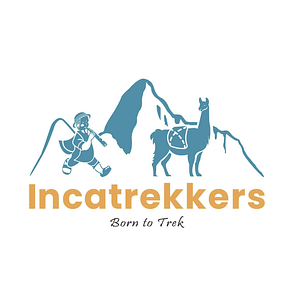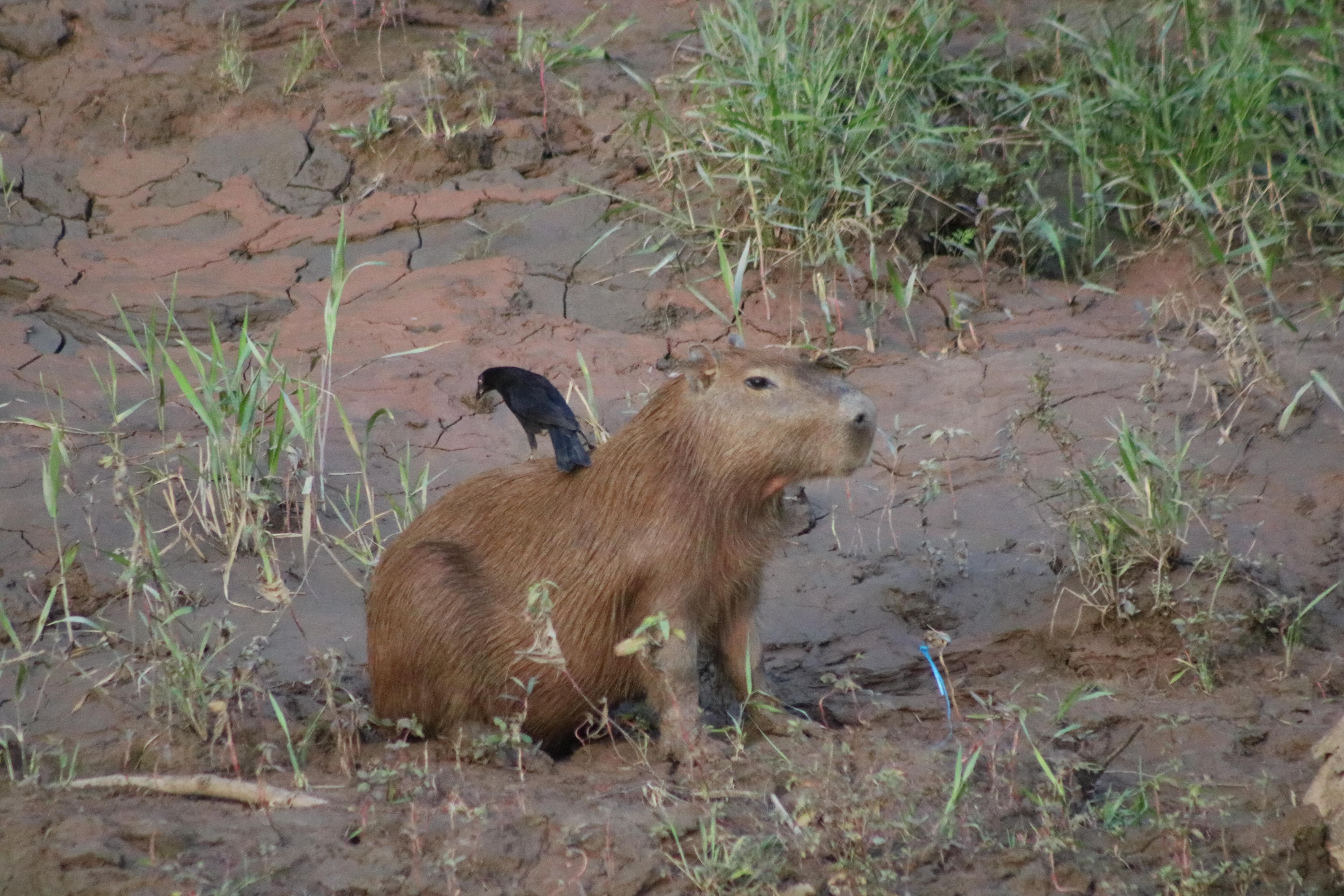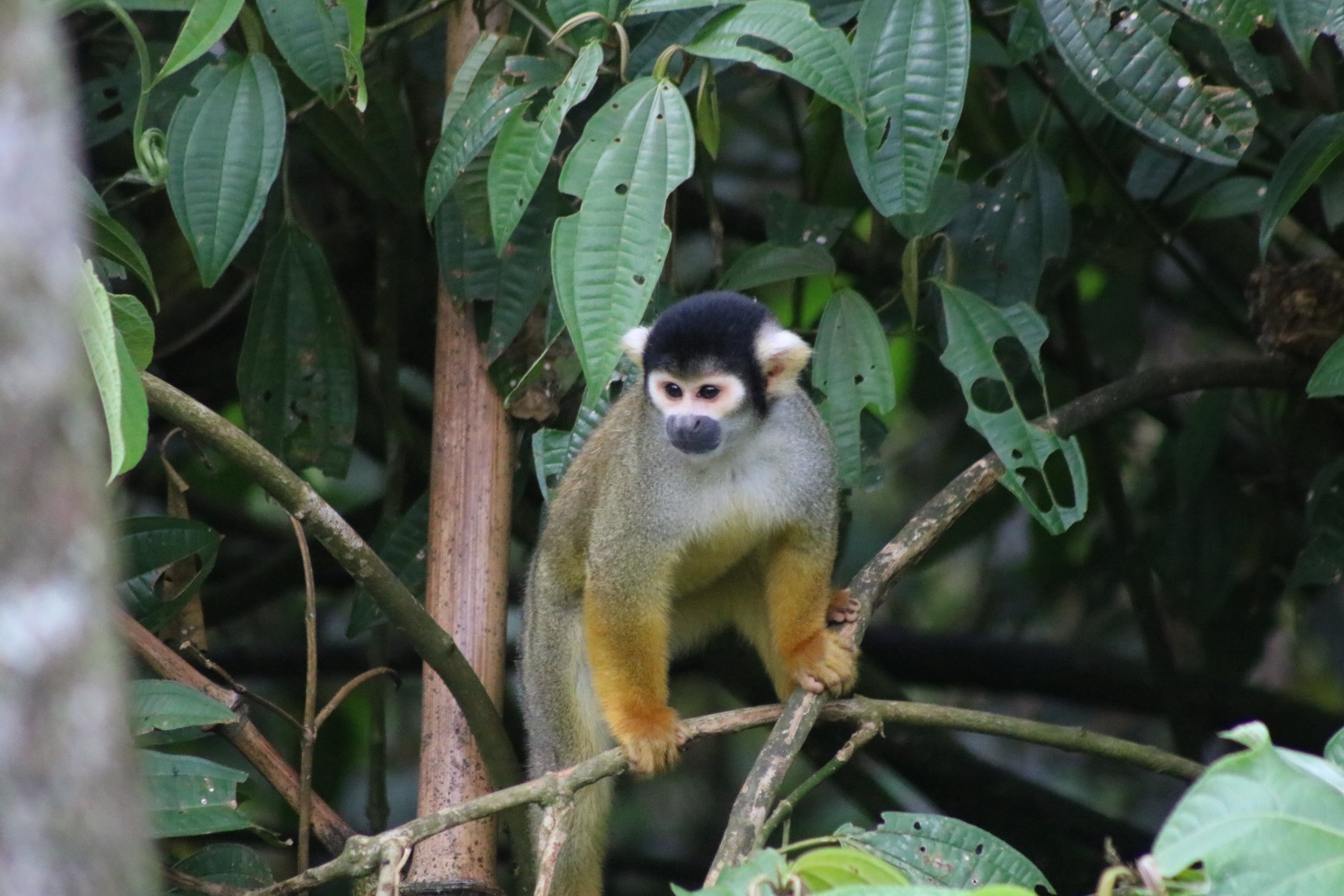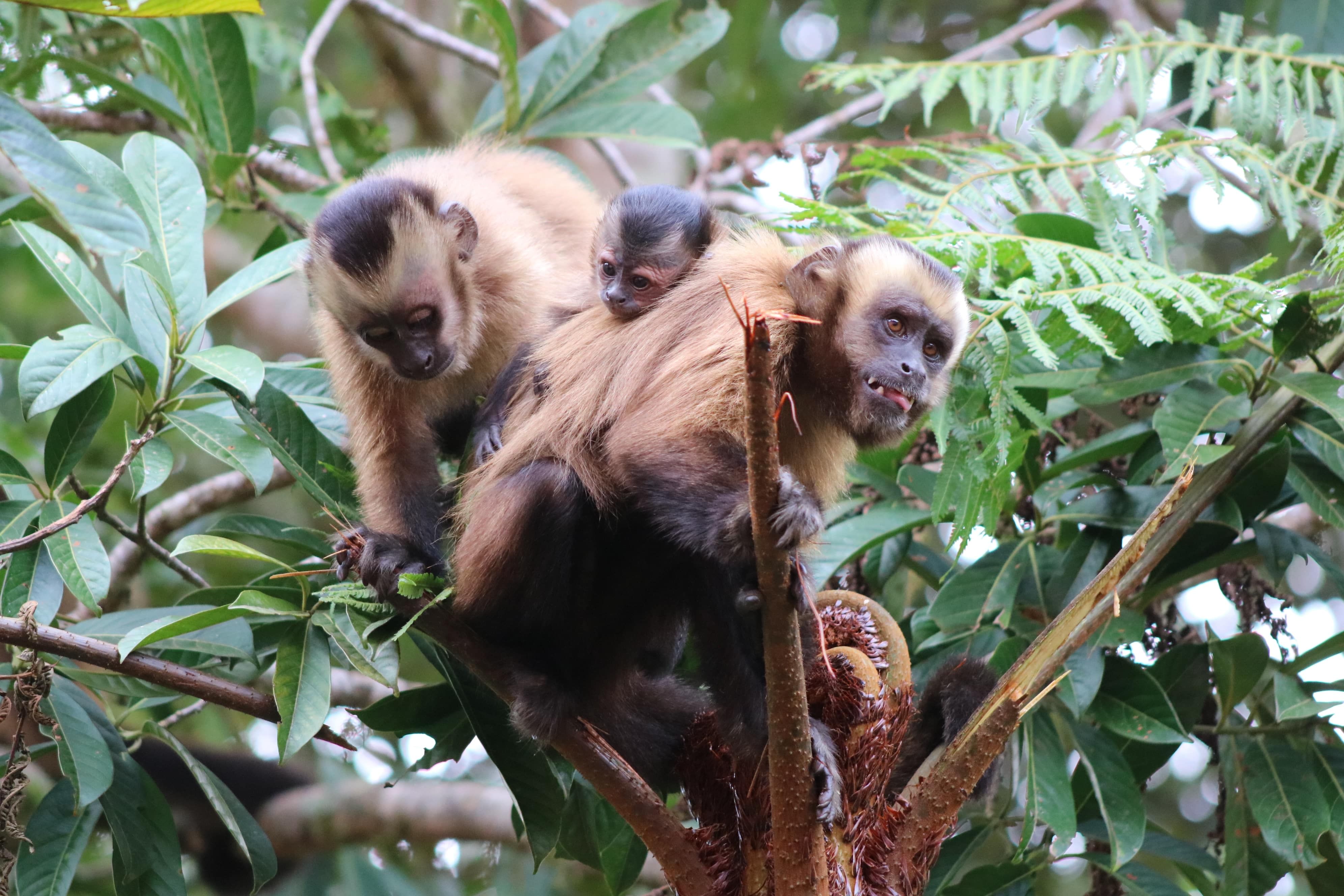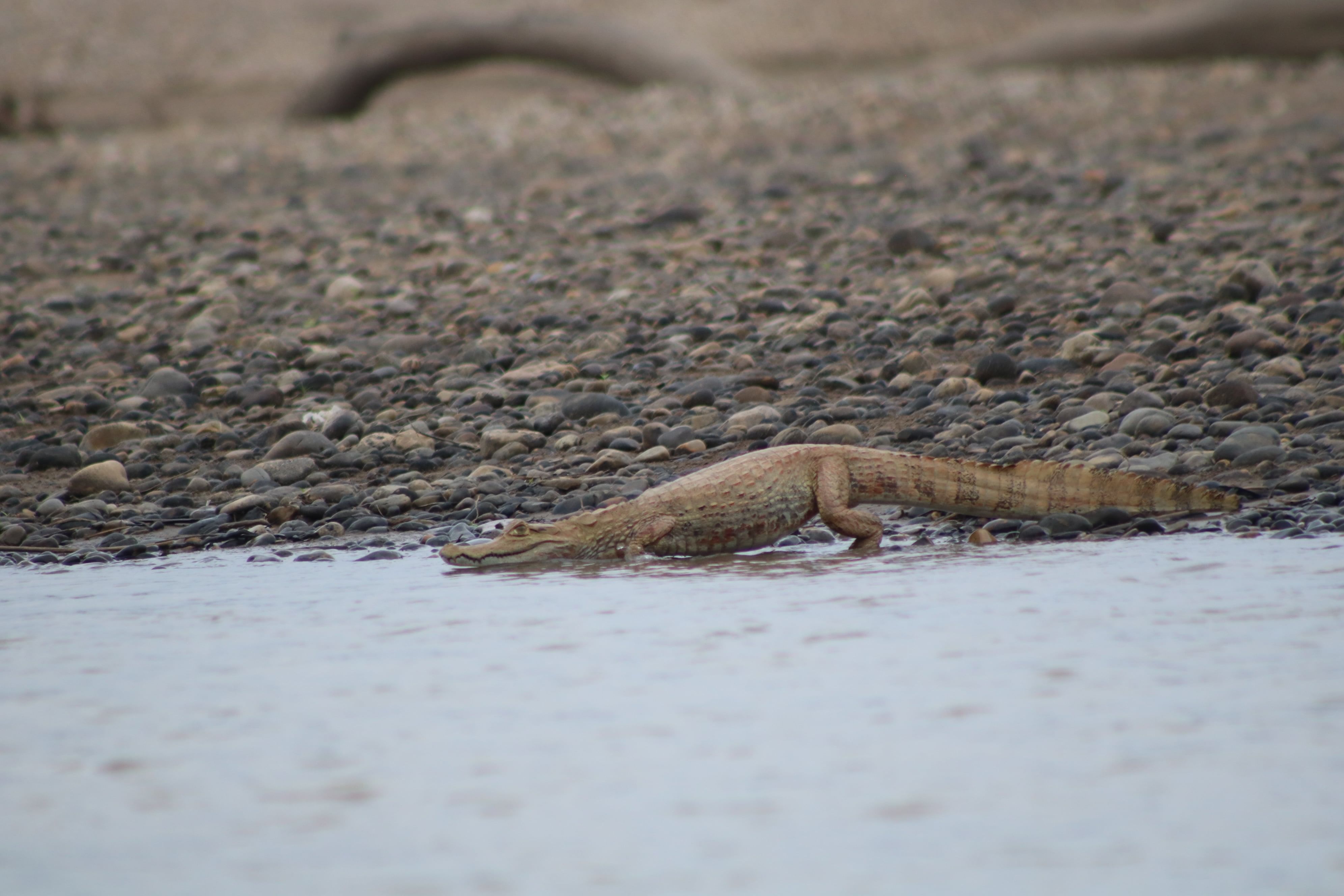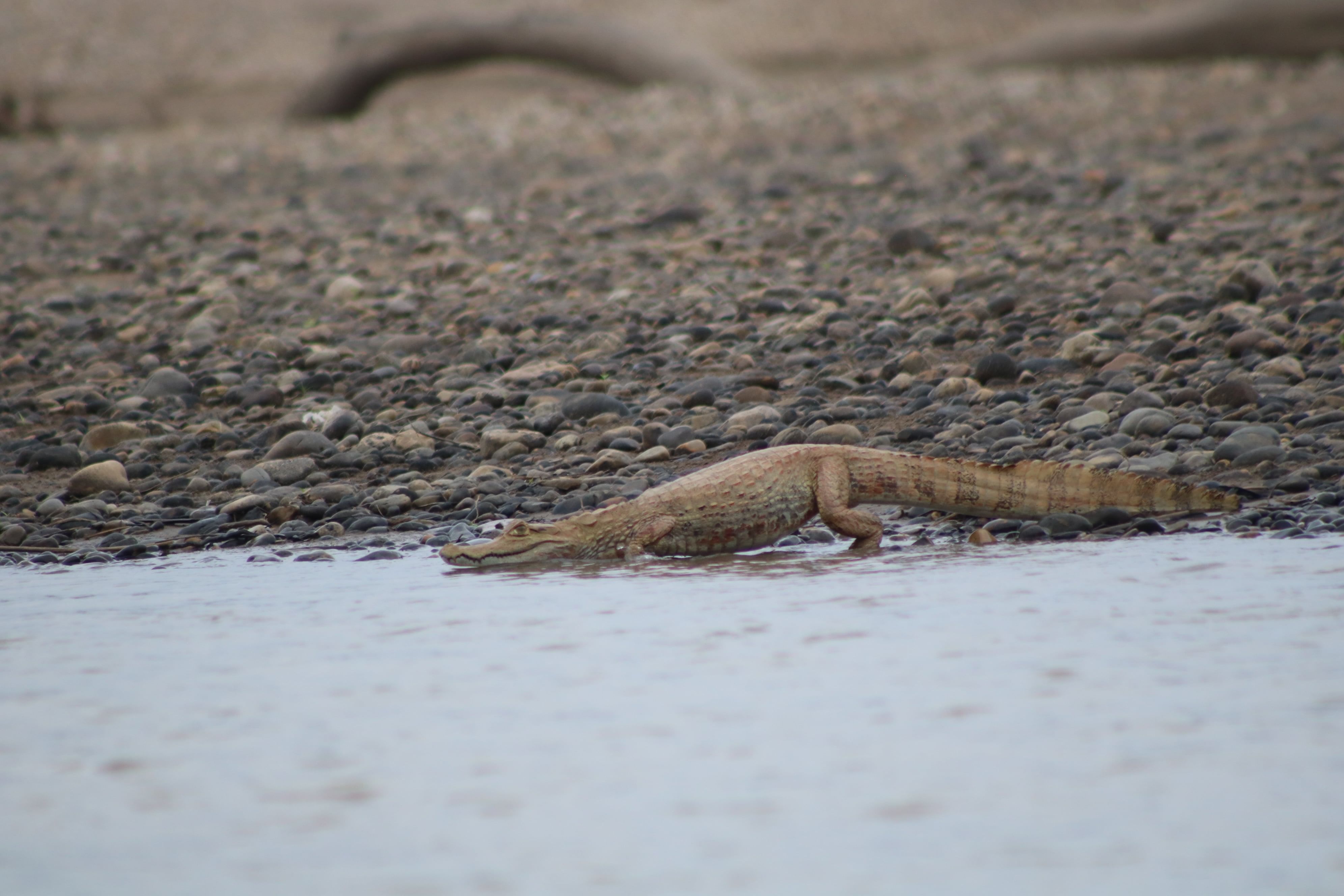Manu Cloud Forest - Manu National Park and Manu Wildlife Center 7D/6N
7-Day tour to Manu Natinal Park
This is one of the most fascinating nature trips in the world. Our overland route crosses an extraordinary range of life zones from highlands to lowlands, taking us through an array of ecosystems found nowhere else on the planet in such close proximity. We visit high altitude farming valleys and traverse stark highland puna, plunge through layers of grassland, elfin forest, layers of lush, ever-changing cloud forest, and then lowland tropical valleys where farmers cultivate coca and exotic fruits. All the way we traverse the habitat of innumerable bird species. Then our journey winds its way by river through lowland rainforest, taking us to a remote jungle village, then to Manu Park Wildlife Center, located in the heart of Manu, the Upper Amazon basin's greatest national park. In Manu we navigate the waters of an isolated oxbow lake, home to giant otters, caimans, monkeys and an endless variety of birds. Our trip ends downriver with the Amazon's finest wildlife viewing opportunities, at Manu Wildlife Center. This lodge offers the finest Tapir viewing in the entire Amazon, as Tapirs are nightly visitors to the lodge's mud wallow. The mornings feature a macaw clay lick project and fruiting trees teeming with macaws. The network of trails, a tower for forest canopy viewing, and two adjacent pristine lakes round out the perfect rainforest experience. After a short canoe journey, we return to Cusco aboard a modern, commercial airplane.
ITINERARY
Day 1: Cusco to Cock-of-the-Rock Lodge.
Our overland journey begins at 3,400m/11,150 ft, with an early departure from the highland city of Cusco. Today's destination is the lush cloud forest region where the Andes fall away to the Amazon basin. This is a day of scenic drama and striking contrasts. We first visit a mountain wetland habitat teeming with migrant and local waterfowl, before crossing two mountain ranges between the Cusco valley and the Paucartambo valley, to a maximum altitude of 3,900m/12,790ft. Finally, we follow a sinuous ribbon of highway on its plunge through an extraordinary world of forested cliffs, waterfalls and gorges. We make leisurely stops to see mountain villages, a hilltop necropolis of chullpas (pre-Inca burial chambers), and the abrupt ridge top of Ajanaco, which marks the final high point where the Andes begin their swoop into the Amazon basin. In clear weather we will see a breathtaking panorama of cloud forest and mountains giving way to the lowland rainforest plains far below us.
After a lunch near here we descend through the startling and rapid environmental transformations characteristic of the tropical Andes, passing from grassland and stunted trees through elfin forest, until we wind through a lush and magical world of overhanging trees, giant ferns, monster begonias, countless orchids and bromeliads, and a diverse and teeming birdlife.
We make frequent spontaneous stops, perhaps spotting a brilliantly feathered quetzal, a trogon, or the wild turkey-like Guan. We reach the comfortable Cock-of-the-Rock Lodge in the late afternoon, the best hour to visit the nearby viewing platform for the display ground, or "lek", and we have a chance to see Peru's dazzling national bird, the Cock-of-the-Rock (Rupicola peruvianus). (Box Lunch, D)
Day 2: Cock-of-the-Rock Lodge to Romero Lodge (Manu National Park).
Rising early, we could scout for birds, and perhaps Brown Capuchin or Woolly monkeys along the nearby road. Or we can take a secluded nature walk on a short trail loop to the river and back. After breakfast we continue our drive, as the mountains give way to low rolling hills and farmland. At Patria, we visit a plantation of coca grown legitimately for the Peruvian coca leaf market. At midday we reach Atalaya, a tiny port where the Piñipiñi River meets the Alto Madre de Dios. Now the lowland rainforest part of our journey begins. Rivers are the highways of the rainforest, and henceforth we will travel in large, comfortable dugout canoes shaded by canopy roofs and driven by powerful outboard motors.
As we follow the river's broad, rushing course past the last foothills of the Andes, our ever-changing route offers sightings of new birds -- terns, cormorants, White-winged Swallows, and flocks of nighthawks flushed from their daytime lairs by the sound of our engine.
Splashes of brilliant yellow, pink and red foliage dot the forest-clad slopes around us, and the breeze is laden with the heady perfumes of the tropical forest.
We turn northward up the chocolate-brown waters of the Manu River to the lake-rich lower Manu National Park. The pristine quality of the forest is instantly apparent, with abundant birdlife and no signs of outside development. We check into the park at Limonal ranger station and then proceed upstream to overnight at Romero Lodge; a new array of forest sounds awaits our ears. As night falls, the whistling call-and-response of tinamous gives way to the loud shrill of cicadas. (B,Box Lunch,D)
Day 3: Romero Lodge to Casa Matsiguenka (Manu National Park).
In the morning, we continue our trip to the Manu Tented Camp, as our boat driver steers skillfully through shallows and driftwood snags. Orinoco Geese and Horned Screamers strut on the beaches, Capped and White-necked Herons patrol the shoreline, and countless sunbathing turtles dive off their log perches as we approach.
After some four hours on the river, we reach the Casa Matsiguenka, a simple but comfortable low-impact lodge nestled almost invisibly in the forest.
Time permitting, we will take a short walk before dinner to stretch our legs and enjoy our first encounter with the virgin rainforest. (B,Box Lunch,D)
Day 4: Manu National Park (Casa Matsiguenka): Cocha Salvador & Cocha Otorongo.
Today we visit two lakes near our Manu Park Wildlife Center. The park authorities determine the time of our visit to Cocha (Lake) Salvador; depending on this schedule, we will visit Cocha Otorongo earlier or later in the day.
Our trail to Cocha Otorongo begins some 30 minutes downstream from the Manu Park Wildlife Center. This brief river journey to the trailhead can always offer the chance of a thrilling wildlife sighting. Perhaps we will spot a family of Capybaras, the world's largest rodent, browsing on the riverbank, or, if we are very lucky, a solitary Jaguar might stalk slowly off an open beach into the forest, flicking its tail in annoyance at our intrusion.
On the short trail to the lake, we may spy one or more of the park's 13 monkey species leaping through the canopy high above. And some of the trees, which form that canopy--such as kapok, ironwood and figs, will astonish us with the vast size of their trunks and buttressed root systems.
These are oxbow lakes, formed when the river changed course, leaving a landlocked channel behind. The lakes are abundant in fish and wildlife, and provide optimum habitat for caimans and the Giant Otter (Pteronura brasiliensis), one of the Amazon's most endangered mammal species.
This lake enjoys maximum protección, y boats are not allowed. However, it features a dock platform and a 50ft tower from which to scan the trees and marshy shoreline for monkeys, kingfishers, Anhinga (a large, long-necked water bird), and countless other species. We have a good chance of sighting the resident Giant Otter family as they dive for the 4Kg. of fish that each individual consumes daily.
Cocha Salvador is the largest of the area's lakes, at 3.5 km, or some two miles long. It is also home to a family of Giant Otters. We cruise the lake on a floating catamaran platform, which offers superb new perspectives of lake and forest. The lakeside trees are often alive with monkeys; Scarlet, Chesnut-fronted and Blue-and-gold macaws beat a path overhead; a variety of herons and egrets scout the water's edge; and the reptilian eyes and snouts of caimans, motionless as logs, may be spied beneath the branches. Somewhere on the open water or among toppled bankside trees, we may spot the sleek heads of the shy Giant Otters. These social animals play and fish together, and we may see them sprawled on a fallen tree trunk, dozing or gnawing on a fish. (B, L, D)
Day 5: Manu National Park (Casa Matsiguenka) to Manu Wildlife Center, Observation tower and trail system.
We set off downriver at dawn. At this hour the chances of wildlife encounters are excellent. We return to the Limonal park station to file our wildlife report before leaving the park. After reaching the turbulent union of the Alto Madre de Dios and Manu rivers we will be near the village of Boca Manu. After ninety more minutes downstream, we arrive at Manu Wildlife Center -- the exciting final stop of our journey -- in time for lunch.
After lunch at the lodge, our guide is available to lead us on freewheeling expeditions in search of further wildlife encounters, or we may take one of the lodge's many trails on private and personal excursions to commune with the spirits of the rainforest. Here we expect to find more species of monkeys, as well as also numerous species of birds. Before or after the dinner, the passengers who have energy and want more experience will have opportunity to visit the Observation Tower.
This evening, from the late afternoon until after dinner, we offer an opportunity to search for caiman and other nocturnal life along the riverbank by boat (If the level of river allows it) (B, L, D).
Day 6: Manu Wildlife Center: Blanquillo Clay Lick, the Wildlife Trails and Tapir Clay Lick.
Another early start (inevitable on wildlife expeditions) is followed by a short boat ride downstream. We take a 20-minute trail through palm plantations to a cut-off channel of the river, where we find the Macaw Lick. A spacious hideaway provided with individual chairs and a convenient place for cameras and binoculars is our ringside seat for what is usually a very spectacular show. We enjoy a full breakfast here while waiting for the main actors to arrive.
In groups of twos and threes the big Red-and-Green Macaws come flapping in, landing in the treetops as they eye the main stage below -- the eroded clay banks of the old channel. Meanwhile, the supporting cast appears: these may include Blue-headed, Mealy, Yellow-crowned, and Orange-cheeked Parrots -- and the occasional villain, a menacing and unwelcome Great Black Hawk.
The drama plays out first in tentative and then bolder approaches to the lick, until finally nearly all the macaws, parrots, and parakeets form a colorful and noisy spectacle on the bare banks, squabbling as they scrape clay from the hard surface.
(Please note that the clay lick is most active from August to October and less so during the months of May and June.)
After lunch at the lodge, our guide is available to lead us on freewheeling expeditions in search of further wildlife encounters, or we may take one of the lodge's many trails to commune with the spirits of the rainforest.
Then we set off along the "collpa trail", which will take us to the lodge's famous Tapir Clay lick. Here at the most active tapir lick known in the entire Amazon, our research has identified 8-12 individual 600-pound tapirs who come to this lick to eat clay from under the tree roots around the edge. This unlikely snack absorbs and neutralizes toxins in the vegetarian diet of the Tapir, the largest land animal of Latin America. The lick features a roomy, elevated observation platform 5m/17ft above the forest floor. The platform is equipped with freshly-made-up mattresses with pillows. Each mattress is covered by a roomy mosquito net. The 10-m-long, elevated walkway to the platform is covered with sound-absorbing padding to prevent our footsteps from making noise. This tapir experience is unique and exciting because these normally very shy creatures are visible up close, and flash photography is not just permitted, but encouraged. The hard part for modern city dwellers is to remain still and silent anywhere from 30 minutes to two or more hours. Many prefer to nap until the first Tapir arrives, at which point your guide gently awakens you to watch the Tapir 10-20m (33-66ft) away below the platform. Most people feel that the wait is well worth it in order to have such a high probability of observing the rare and elusive Tapir in its rainforest home. (B/L/D)
Day 7: Manu Wildlife Center to Cusco or Lima - Departure Day
We leave our lodge very early on the two-hour and a half return boat trip downstream to the Colorado Village. Depending upon the time we must be in Puerto Maldonado, the breakfast will be served at the lodge or on the boat, of course this is a perfect time to take advantage of valuable early morning wildlife activity along the river, and in additions this journey allows us to see several lowland native settlements and gold miners digging and panning gold along the banks of the Madre de Dios River. We will stop in the far-west type gold-mining town of Colorado to start our overland journey to Puerto Carlos for 45 minutes, then you will cross the Inambari River for 10 minutes' boat trip to Santa Rosa, finally a van or bus will drive us in approximately two-hours and a half to the airport in Puerto Maldonado City, here you fly by a commercial airplane to Cusco or Lima, and with this assistance your jungle adventure ends… (B)
Important notes… Please note that the program may vary slightly so as to maximize your wildlife sightings, depending on the reports of our researchers and experienced naturalist guides based at the lodge.
PRE-DEPARTURE INFORMATION
Manu - The World's Greatest Rainforest Destination
Manu, the name has acquired a legendary mystique among birdwatchers, naturalists, and conservationists throughout the world. No other park on the planet protects so many bird species, so many plants and animals, as this outstanding wilderness area, and only 20% of the entire Amazon has the rich floodplain soils that yield abundant rainforest fruits and support dense populations of forest wildlife of that area. These are the qualities that have earned Manu its fabled reputation as the jewel in the crown of Amazon wildlife viewing experiences, and for those who choose to take the land route into Manu, the park offers even more-a vast span of stark mountain and high altitude cloud forest that covers the entire spectrum of contrasting natural environments and wildlife, all the way from the high Andes to the Amazonian lowlands.
WEATHER CONDITIONS
Rainfall in the Manu Lowlands is around 2500-3500 millimeters/98-138 inches per year, with most rainfall occurring in the rainy season months from November to April. The average temperature in the Manu lowlands is 28°C (82°F), with daily highs of 34°C (93°F) and nightly lows of 22°C (72°F). During the dry season, cold fronts from the South Atlantic (friajes) occur once every month or so, with daily temperatures dropping to 15°C (59°F) and nightly temperatures to 13°F (55°F). In the Manu Cloud Forest there is an annual rainfall of approximately 5000 millimeters/196 inches per year. The average temperature is 24°C (75°F), with daily highs of up to 29°C (84°F) and nightly lows of 11°C (52°F).
ABOUT LODGES
Cock-of-the-Rock Lodge is located in the pristine Manu cloud forest on the verdant eastern slopes of the Andes. Opened in 1997, it is named after the Andean Cock-of-the-Rock (Rupicola peruviana), Peru's large, bright-red national bird that puts on a colorful, noisy mating display adjacent to the lodge every morning. Spectacled Bears, Woolly Monkeys, Brown Capuchin Monkeys, quetzals and a host of other colorful birds inhabit the surrounding forest, and a bubbling mountain stream tumbles past the lodge. Situated at an elevation of 5000 feet (1600 meters) in the cool, mosquito-free Kosñipata Valley close to the wild Cusco-Shintuya road, the lodge protects and supports a 12,500-acre private cloud forest reserve. It consists of 10 double-occupancy bungalows with private bath facilities, and a separate complex with a large dining area. A local highland family staffs the lodge, and they also work as rangers, patrolling the private reserve.
Villa Carmen Lodge.- The 7,600-acre property is located in the buffer zone of Manu National Park, and boasts over 25 miles of trails spanning a wide variety of habitats, including old-growth rainforest, lower montane forest, secondary forest, bamboo, streams, rivers and waterfalls.
The station also neighbors several indigenous Wachiperi and Machiguenga communities as well as the Haramba Queros Wachiperi Conservation Concession.
Villa Carmen has six brand new cabins with floor-to-ceiling screened windows. Each cabin features comfortable beds (your choice of single or double) with mosquito nets, two Adirondack chairs, a luggage and clothes rack, electricity 24 hours and a luxurious private bathroom. A brand-new dining room, lounge, and bar welcome you for meals and provide comfortable seating for reviewing your lists at the end of the day.
Romero Lodge. - Located between the Limonal and Pakitza checkpoints into the Manu National Park. Our facilities have everything you need to provide you with an unforgettable experience; it was designed to provide you the most comfortable and secure accommodation, but also breathtaking views of the Manu River, and accessible trails to the forest in a unique trip; visiting the primary forest lets you appreciate species of mammals as the puma and jaguar; birds as hummingbirds, and a great diversity of flora such as orchids and enormous trees.
Manu Wildlife Tented Camp - is located near Cocha (Lake) Salvador, the largest and most beautiful of the 13 oxbow lakes of the Manu River. The Manu Wildlife Tented Camp features screened, hermetically-sealed, double-occupancy, walk-n tents. Each tent measures 16.5x10x7 feet (5x3x2.2m) and the floor is elevated above the ground on wooden stilts. Each of the extra-long twin beds in each tent has a mosquito net. Our camp also features an elevated, screened dining room with wooden floor and a separate complex of shared hot-water showers and flush toilets.
Casa Matsiguenka.- The Matsiguenka people live in two native communities, Tayakome and Yomibato, who, seeing the need to improve their quality of life, preserve their nature and their culture, decided to start their company dedicated to Ecotourism.
We are Matsiguenkas communities, and we have a totally traditional life: hunters, gatherers, fishermen and rotary farmers. We live at Manu riverbank and the headwaters of the Fierro wáter stream, within the Manu National Park.
Casa Matsiguenka offers bungalows with mosquito nets, private bathroom and kitchen connected with dining room.
Casa Matsiguenka has 24-hour electricity thanks to financing from the Ibero-American program of science and technology for development (CYTED).
Manu Wildlife Center.- Is located east of the Manu River on the north bank of Madre de Dios River. The Lodge contains 22 double-occupancy fully screened private bungalows, separate complexes with hot showers and toilets, a large fully screened dining room and a delightful bar with hammocks for relaxing.
Cock of the Rock Lodge Romero lodge, Manu Wildlife Tented camp and Manu Wildlife Center has no electricity, a 220V generator is available (make sure your equipment is compatible with this voltage) and has limited electricity at certain times of night, during which it is possible to recharge batteries; although a local wall-plug adaptor may be required. So, the communal areas lit by lamps and candles, the paths around the lodge complex lit by lamps and the guest bungalows lit by candles.


